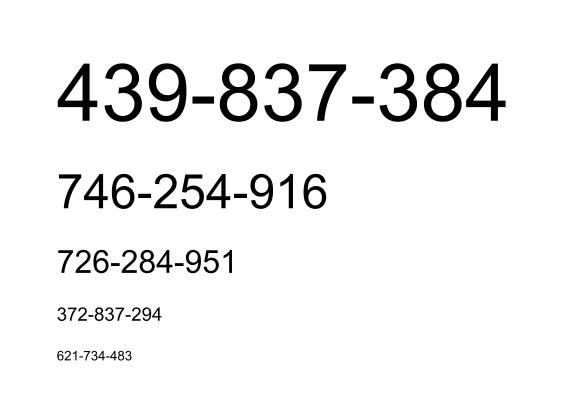Six ways to help your child read
Here are six little ways that you can make the learn to read process so much easier for your child.
Using the techniques below, we normally see reading progress come through at 5x or ever 10x the normal rate. That means learning to read in a few months, instead of years.
Please do share this page if you find it useful!
1 – Test for Tracking
Indicator: Skipping words.
I am sure you have got an eye test for your child, but the standard test does not check for good convergence and tracking of the eyes.
What you need to do is ask your child to read out the numbers below as phone numbers (i.e. that would be four three nine, eight three seven, three eight four for the first one).
What you are looking for is the moment when it gets harder. Then avoid asking your child to read anything smaller than that size of text until we have trained up their eye tracking:

2 – Colours for Contrast Sensitivity
Indicator: Rubbing eyes when reading
If you are surprised by how big the text needs to be, lay a coloured acetate over your screen to see if that makes it easier.
If it does, your child has a sensitivity to the black on white contrast.
If it doesn’t make any difference, then your child needs to do some exercises to tune up their eye tracking and convergence.
3 – Dive into Decoding
Indicator: Guessing short words
Your child should be reading by converting letters into sounds. Some very bright visual learners lean towards memorising the shapes of words instead.
That can give good early progress, but it becomes very difficult when there are hundreds or thousands of different words in a book.
The signs to look for are flipping (b/d, on/no, of/for) and lots of guessing with short, common words. If you can’t stop the guessing, then a period of reading practice with Easyread will sort it.
4 – Build Blending
Indicator: Difficulty blending sounds into words
As your child learns to read, they should be doing all of this slow “decoding” of letters into sounds and then blending them into words.
Some children find the blending very hard. If you have seen that, the key technique is this:
1 – Ask your child to pick a word of their choice
2 – Ask them to break it into individual sounds
3 – Ask them to put the bits back together again, as the word
if they do that with five words each day, you should see a leap of confidence in less than a week.
5 – Flow into Fluency
Indicator: Staccato, slow reading
Of course, the aim is full fluency. There is a little technique which makes this happen so much faster! Here it is:
As you work through a book, you should stop at the end of every phrase of 3-5 words and ask your child to reread the phrase through again, nice and fluently.
It might take a couple of goes to get it fluent. Then they move on, to working out the words in the next phrase. You will find that little routine will double the rate of progress on its own.
6 – Stop the Stress
Indicator: Tantrums, frustration or silent treatment
Stress during reading practice is very bad, because it shuts down higher brain function and makes reading practice harder.
The ways to eliminate stress are:
1 – Keep the sessions to a fixed length of 10-15 minutes. Then always stop!
2 – Loudly congratulate your child on everything they get right. That should be every few seconds. And empathise when something is tricky, rather than seeming frustrated (even if you are frustrated!).
3 – Make it all easier with Easyread trainertext.
Want to know more?
There are two options:
1 – You can do our online teacher training course on the potential causes of reading difficulty.
2 – You can get us to help accelerate your child’s progress with the Easyread System:
